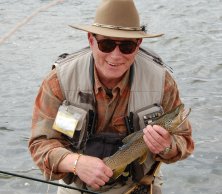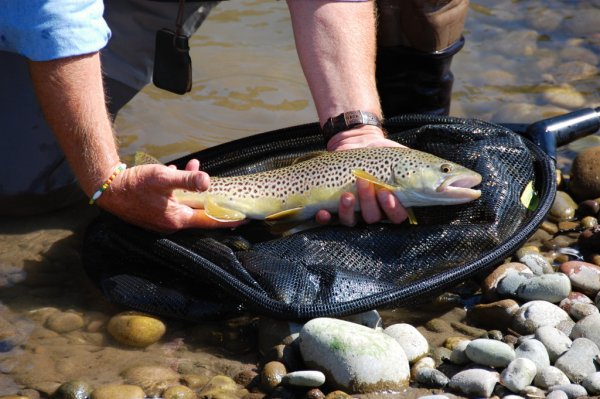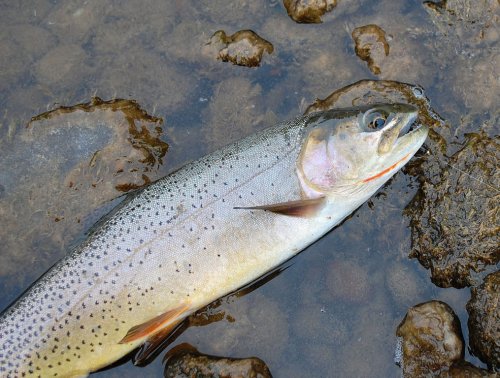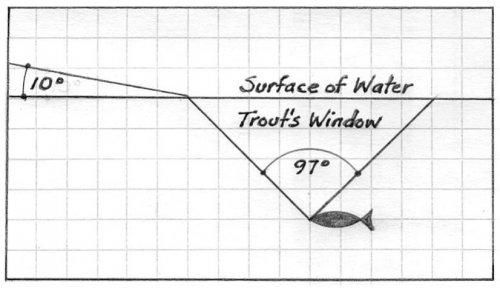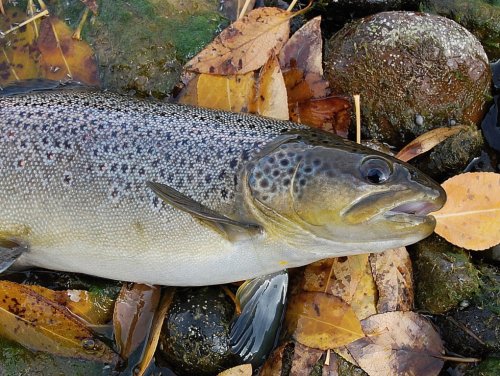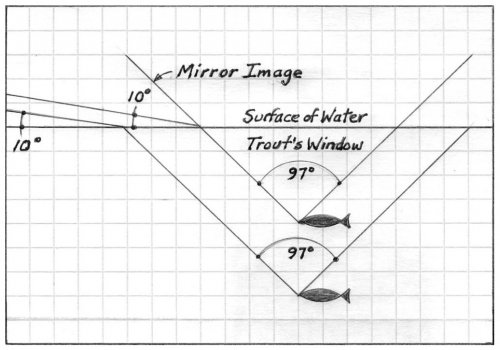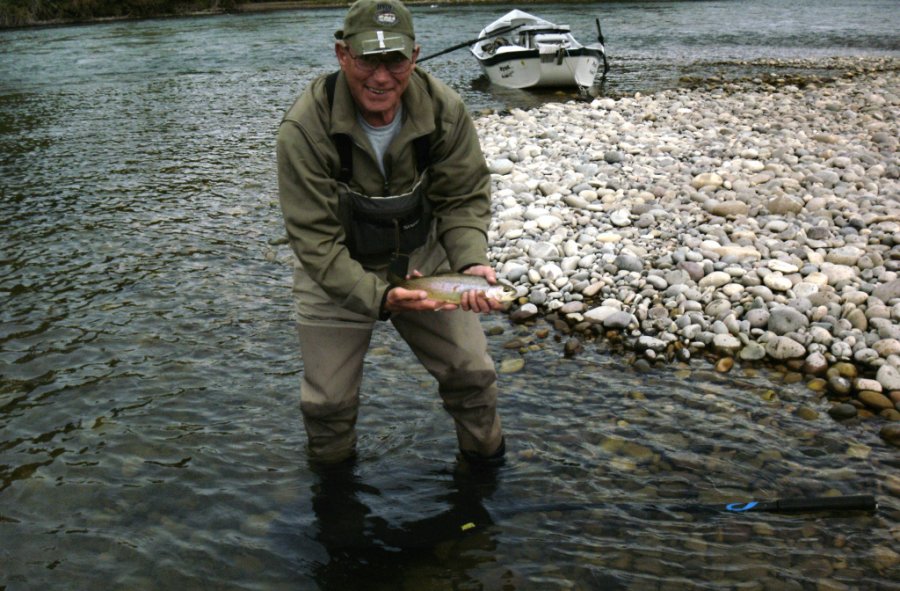I am standing in midstream, watching trout rising upstream from me and trying to decide which trout I should cast to first without spooking the others. Executing my cast to the trout I had selected, he was quickly hooked and landed with very little disturbance. Watching the other trout and the water, I noticed afair hatch of insects starting to emerge. Now I’m seeing other trout rising to the left, right, and downstream.
Realizing what is happening, I now know I’m standing in a 360 degree circle of rising fish. I recalled this situation from some years ago when I had watched a videotape by Doug Swisher, titled “Advanced Fly Casting.” In this tape, he talked about fishing the clock and demonstrated the casts necessary to address the different positions of the clock. Imagine if you will a clock face on the surface of the water with you standing in the center, looking straight upstream to the 12 o’clock position.
Casting within the 10 to 2 o’clock positions, I hooked most of the trout. Casting clock wise, starting at 3:00 and working around to the 9:00 position, I could not hook a trout. Trout would rise to the fly, but reject it at the last second. I was using the same flies, but without success. I went to smaller patterns and still could not hook a trout. Remembering one of the key characteristics of the trout’s vision, that one eye was dominant and the other weaker, I knew that a trout will take a fly more readily on the dominant side. I would pick a trout within the 3:00 to 9:00 positions using the dominant eye theory, but still had no success.
It was getting late, so I headed home thinking of the experienceI just had. Immediately, I went to my tying room to see if Icould tie a better imitation of the flies that were hatching and itwas then that I realized it wasn’t my flies. Of all the troutsenses, vision is the most acute. Trout are very good atdistinguishing objects out of their element. The trout rising fromthe 3:00 to the 9:00 positions were also seeing me standingerect in the stream, and at that time rejecting the fly. When atrout is lying motionless, it has four blind spots. The four blindspots are directly above his face, below his face, in front of hisnose, and directly behind him. With normal swimmingmovements of the head and body, the trout will be able to seeinto these blind spots with his peripheral vision. There is onemore area that I consider a blind spot, and that is the ten degreeangle beginning at the outer edge of the trout’s window, asillustrated below.
This ten degree angle will always start at the edge of the trout’s window, no matter what depth of water the trout is holding in. The trout’s vision is controlled by many elements, but the mainfactor affecting his vision is the refraction of light. Refraction is the bending of light rays when they pass from one medium into another of different density. This article is only concerned with the ten degree angle and below. When light rayshit the water at ten degrees or less, the largest percentage of the rays are reflected, causing glare, or what is called the gray zone. Objects in this zone are so compacted that it creates a dark area. The closer they get to the point at the diameter of the trout’s window, the more they are compacted, becoming distorted and meaningless to the trout. When an object breaks the plane of theten degree angle, the trout will see the top of that object first.
For example, when a mayfly is drifting toward the trout’s window, the first thing seen is the top of its wings. The troutwill not see the whole fly until it enters the trout’s window. The trout sees objects from the ten degree angle to the ninety seven degree angle of his window by what is called the mirror effect. The deeper the trout is in the water column, the farther you must stand away to stay below the ten degree angle. The shallowerthe trout is, the closer you can stand. When I was standing inthe center of the clock, the trout I was casting to were within thirty feet or less, and two feet deep or less. While standing erect and casting vertically, the trout were seeing me and the flashes of my rod from casting motions before they would rise to the fly. This mirror effect is illustrated below.
Back on the stream the next day faced with similar hatch conditions, I did not get hung up on all the trout that were rising. This time, using the knowledge I have gained, e.g. getting on one knee, bending at the knees and waist, casting horizontally, and keeping everything below the ten degree angle, I was able to hook most of the rising trout. I wassatisfying the desire and love that I have for the art of flyfishing, one trout at a time. If you would like to learn more about light refraction and them a thematical equations on this subject, I would recommend reading these four books:
The Fly Fisher’s Entomology by Alfred Ronalds, In the Ring of the Rise by Vincent C. Marinaro, Presentation by Gary A. Borger and The Trout and the Fly by Brian Clarke and John Goddard.







